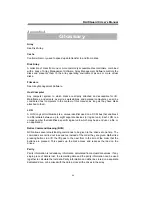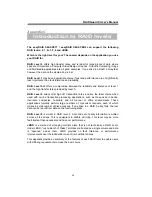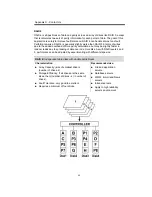
RAIDGuard X User’s Manual
54
RAID 5
RAID 5 uses a mathematical expression that compares data from two drives and
calculates a third piece of data called “parity”. Should one of the drives fail, parity data
can be used to rebuild the failed data. Under RAID 5, parity data is stored across all
drives in the array. This maximizes the amount of storage capacity available from all
drives in the array while still providing data redundancy. Data on RAID 5 is block-
interleaved.
RAID 5: Independent data disks with distributed parity blocks
Characteristics: Recommended
use:
Each entire data block is written on a data disk.
Parity for blocks in the same rank is generated
on Writes, recorded in a distributed location and
checked on Reads.
Highest Read data transaction, medium Write
data transaction rate.
Relatively low ratio of ECC (Parity) disks to data
disks means high efficiency (compared to other
RAID levels).
Good aggregate transfer rate.
Storage capacity = (No. of disks – 1) × (capacity
of smallest disk)
File and application
servers
Database servers
WWW, E-mail and News
servers
Intranet servers
Most versatile RAID level
The diagram below represents the writing of data on a RAID 5 array composed of four
HDDS connected to the controller. Parity blocks are represented by the letter P.
Arrangement of data and parity blocks saved on a Level 5 RAID
Summary of Contents for S8A2
Page 2: ......
Page 3: ...PCIe to Serial ATA II Disk Array System easyRAID S8A2 Software Manual ...
Page 4: ......
Page 8: ...RAIDGuard X User s Manual 4 Introduction ...
Page 13: ...9 Software Installation ...
Page 18: ...RAIDGuard X User s Manual 14 Basic RAID Configuration ...
Page 34: ...RAIDGuard X User s Manual 30 Advanced RAID Configuration ...
Page 40: ...RAIDGuard X User s Manual 36 Step 3 Check the Confirm box and then the OK ...
Page 49: ...45 Appendices ...



































